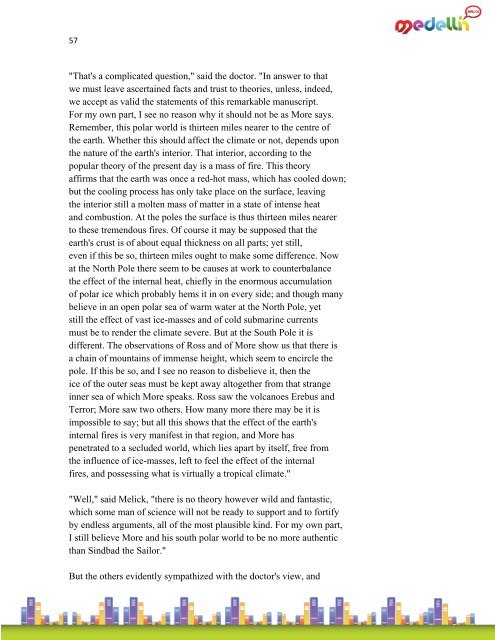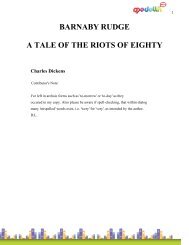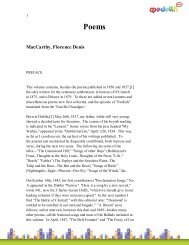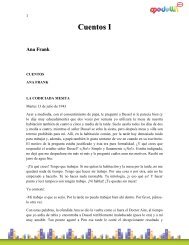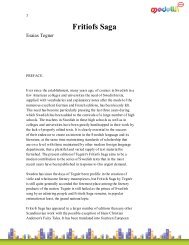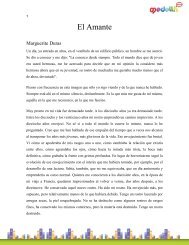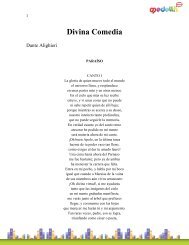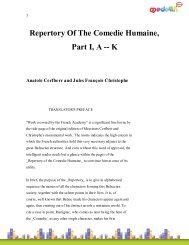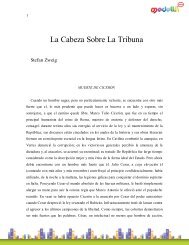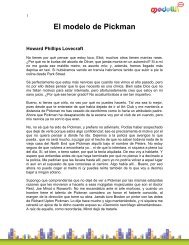A Strange Manuscript Found in a Copper Cylinder James De Mille
A Strange Manuscript Found in a Copper Cylinder James De Mille
A Strange Manuscript Found in a Copper Cylinder James De Mille
Create successful ePaper yourself
Turn your PDF publications into a flip-book with our unique Google optimized e-Paper software.
57<br />
"That's a complicated question," said the doctor. "In answer to that<br />
we must leave ascerta<strong>in</strong>ed facts and trust to theories, unless, <strong>in</strong>deed,<br />
we accept as valid the statements of this remarkable manuscript.<br />
For my own part, I see no reason why it should not be as More says.<br />
Remember, this polar world is thirteen miles nearer to the centre of<br />
the earth. Whether this should affect the climate or not, depends upon<br />
the nature of the earth's <strong>in</strong>terior. That <strong>in</strong>terior, accord<strong>in</strong>g to the<br />
popular theory of the present day is a mass of fire. This theory<br />
affirms that the earth was once a red-hot mass, which has cooled down;<br />
but the cool<strong>in</strong>g process has only take place on the surface, leav<strong>in</strong>g<br />
the <strong>in</strong>terior still a molten mass of matter <strong>in</strong> a state of <strong>in</strong>tense heat<br />
and combustion. At the poles the surface is thus thirteen miles nearer<br />
to these tremendous fires. Of course it may be supposed that the<br />
earth's crust is of about equal thickness on all parts; yet still,<br />
even if this be so, thirteen miles ought to make some difference. Now<br />
at the North Pole there seem to be causes at work to counterbalance<br />
the effect of the <strong>in</strong>ternal heat, chiefly <strong>in</strong> the enormous accumulation<br />
of polar ice which probably hems it <strong>in</strong> on every side; and though many<br />
believe <strong>in</strong> an open polar sea of warm water at the North Pole, yet<br />
still the effect of vast ice-masses and of cold submar<strong>in</strong>e currents<br />
must be to render the climate severe. But at the South Pole it is<br />
different. The observations of Ross and of More show us that there is<br />
a cha<strong>in</strong> of mounta<strong>in</strong>s of immense height, which seem to encircle the<br />
pole. If this be so, and I see no reason to disbelieve it, then the<br />
ice of the outer seas must be kept away altogether from that strange<br />
<strong>in</strong>ner sea of which More speaks. Ross saw the volcanoes Erebus and<br />
Terror; More saw two others. How many more there may be it is<br />
impossible to say; but all this shows that the effect of the earth's<br />
<strong>in</strong>ternal fires is very manifest <strong>in</strong> that region, and More has<br />
penetrated to a secluded world, which lies apart by itself, free from<br />
the <strong>in</strong>fluence of ice-masses, left to feel the effect of the <strong>in</strong>ternal<br />
fires, and possess<strong>in</strong>g what is virtually a tropical climate."<br />
"Well," said Melick, "there is no theory however wild and fantastic,<br />
which some man of science will not be ready to support and to fortify<br />
by endless arguments, all of the most plausible k<strong>in</strong>d. For my own part,<br />
I still believe More and his south polar world to be no more authentic<br />
than S<strong>in</strong>dbad the Sailor."<br />
But the others evidently sympathized with the doctor's view, and


